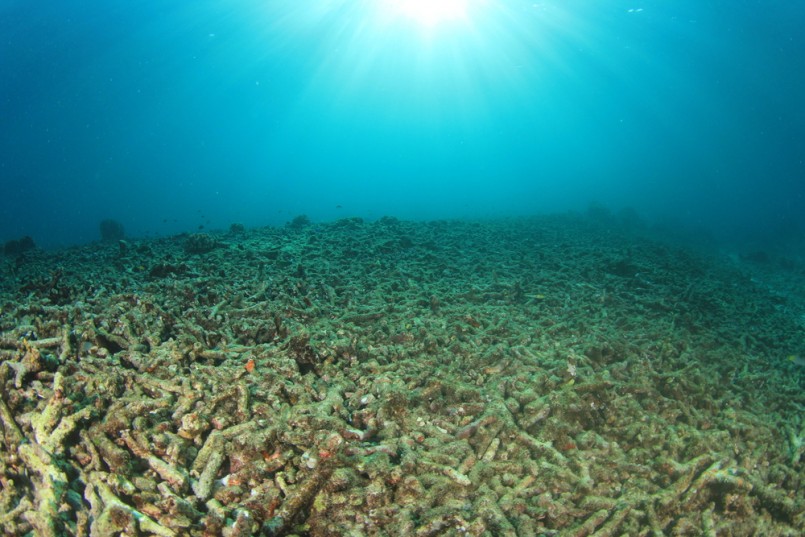Environment
Everything you need to know about the coral bleaching crisis

Image: Shutterstock/Rich Carey
Global warming affects the entire planet in many ways. Some of these ways are less obvious, one of which being coral bleaching. While this occurrence is not one of the most advertised effects of rising sea temperatures, its impact is not one to be overlooked. Coral’s role in underwater ecosystems extends to many other organisms and is a source of income for locals who live on the coast. Countries are limiting visitor access to coral sites in efforts to save them and preserve the wildlife.
The primary reason behind coral bleaching is temperature change in the waters it inhabits. The coral loses all of its color because algae are no longer living on it. Coral and algae have a symbiotic relationship where they provide each other with nutrients in order to live. However, if it gets stressed from temperatures that are too far from its range of functioning, the algae are ejected because it can no longer keep it alive. Coral bleaching was not an issue until recently, making it a clear effect of climate change. The algae are what give coral its vivid colors and without it, it turns white. Not only does bleaching affect the algae, but it also affects any other organism that interacts with coral. Other fish live in coral, it protects the shorelines and humans use it as a tourism attraction, making it part of the local economy.
Countries that use coral as a source of tourism and a driving force of the economy are placing its conservation as a priority. In Thailand, sites were shut down in hopes of getting them healthy again. Tourism has many negative affects on the environment, one of which being a large consumption of fossil fuels. While this phenomenon is high on Thailand’s priorities, it seems to be less of a concern in Australia. The Great Barrier Reef has been excluded from the UN’s list of sites in need of protection, much to the government’s surprise. Because of this, the future of the coral is compromised.
This is not the first time coral bleaching has been a problem. In the early 2000’s, there were other events of mass bleaching in the US and the Caribbean as the sea temperatures were high above average and the coral could not survive in such conditions. The ecosystems and economies are still suffering from its effects.
While there are no quick fixes, the way to solve this problem fits in the bigger picture. Taking action to reduce the carbon footprint can help prevent coral bleaching. Decreasing the use of fuel-dependent transportation and vehicles can help reduce the effects of climate change and taking more eco-friendly approach to tourism will have long-term positive effects that will go beyond the coral sites.





0 comments